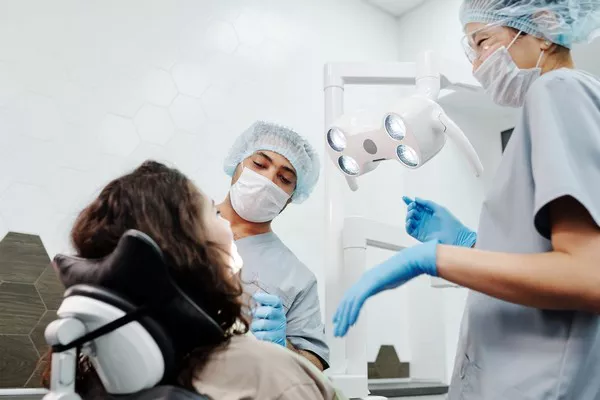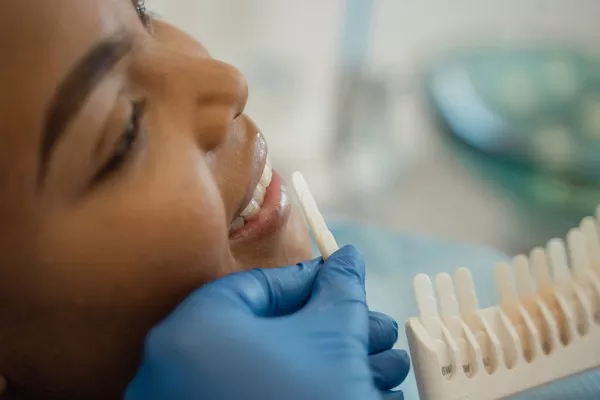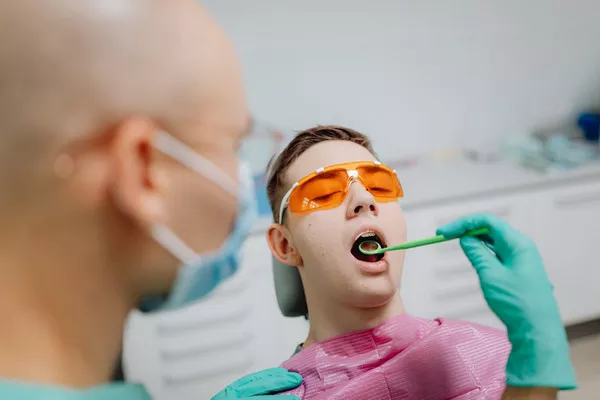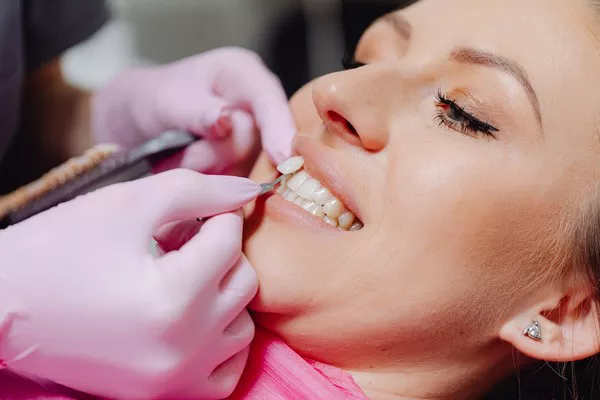Orthodontic treatment is a significant investment in your smile and oral health. After the commitment to braces or aligners, patients often wonder about the next steps to ensure their teeth stay in their new, improved positions. A crucial part of post-orthodontic care is the use of retainers. This comprehensive guide will cover everything you need to know about wearing retainers, including the types, duration, and importance of consistent use.
Purpose of a Retainer
The primary purpose of a retainer is to maintain the position of teeth after orthodontic treatment. Once braces or aligners have shifted your teeth into their desired positions, your teeth and surrounding bone need time to stabilize. Retainers prevent your teeth from moving back to their original misaligned positions, a process known as relapse. They are an essential component of maintaining your newly aligned smile and ensuring the long-term success of orthodontic treatment.
Types of Retainers
There are two main types of retainers: permanent (fixed) and removable. Each type has its specific uses, benefits, and care requirements.
Permanent Retainers
Permanent retainers, also known as fixed or bonded retainers, consist of a metal wire bonded to the back of your teeth. Typically used for the lower front teeth, these retainers are particularly effective in preventing relapse, especially in patients whose teeth were severely misaligned or who are at a higher risk of shifting.
Advantages:
Constant Support: Since they are fixed in place, they provide continuous support to keep teeth in their new positions.
No Compliance Issues: Patients do not need to remember to wear them, which eliminates the risk of forgetting or losing them.
Disadvantages:
Hygiene Challenges: Fixed retainers can make brushing and flossing more challenging, requiring special tools to clean around the wire.
Potential for Damage: They can break or become detached, necessitating repair by an orthodontist.
Removable Retainers
Removable retainers come in two main types: Hawley retainers and clear plastic retainers.
Hawley Retainers:
Design: Made of acrylic and metal wires, these retainers are custom-fitted to the mouth and have an adjustable wire that fits across the front of the teeth.
Durability: They are durable and can last for many years if cared for properly.
Adjustability: The metal wires can be adjusted by an orthodontist to ensure a perfect fit.
Clear Plastic Retainers (Essix or Vivera Retainers):
Design: Made from clear, durable plastic, these retainers fit snugly over the teeth, similar to clear aligners used in orthodontic treatment.
Aesthetic Appeal: They are nearly invisible, making them a popular choice among patients concerned about aesthetics.
Comfort: They are usually more comfortable and less bulky than Hawley retainers.
Advantages:
Ease of Cleaning: Removable retainers can be taken out for eating, brushing, and flossing, making oral hygiene easier.
Flexibility: They are easy to adjust and replace if damaged.
Disadvantages:
Compliance Required: Their effectiveness depends on consistent use by the patient, and they can be lost or forgotten.
Durability: Clear plastic retainers can wear out more quickly and may need to be replaced more frequently.
Initial Period of Wear
After your braces or aligners are removed, the initial period of retainer wear is crucial. Orthodontists typically recommend wearing your retainer full-time during this period, which usually lasts for a few months. Full-time wear means keeping the retainer in your mouth all day and night, removing it only for eating, brushing, and flossing.
Why Full-Time Wear is Important:
Stabilization: Immediately after orthodontic treatment, your teeth are most vulnerable to shifting. Full-time wear helps ensure they stabilize in their new positions.
Bone Remodeling: It takes time for the bone and soft tissues around your teeth to remodel and adapt to the new alignment. Full-time retainer use supports this process.
see also:Navigating Orthodontic Retainer Costs
Transition to Part-Time Wear
After the initial full-time wear period, most patients transition to part-time wear, typically at night. This phase can last for several months to a few years, depending on the individual case and the orthodontist’s recommendations.
Why Night-Time Wear Suffices:
Maintained Alignment: After the initial stabilization period, night-time wear is usually sufficient to keep teeth in their new positions.
Convenience: Wearing a retainer only at night is more convenient and less intrusive on daily activities.
Long-Term Use
One of the most common questions is whether retainers need to be worn indefinitely. The answer is often yes, though it can vary based on individual needs and circumstances.
Why Long-Term Wear is Recommended:
Natural Shifting: Teeth naturally shift over time due to aging, changes in the jaw, and daily wear and tear. Long-term retainer use helps mitigate these effects.
Relapse Prevention: Without a retainer, there’s a higher risk of relapse, especially in the years immediately following orthodontic treatment.
Common Long-Term Regimens:
Nightly Wear: Many orthodontists recommend wearing retainers every night indefinitely.
Periodic Wear: Some patients may transition to wearing their retainers a few nights a week after a few years of nightly use.
Individual Variability
The duration of retainer use can vary significantly based on individual treatment needs and specific orthodontic care.
Factors Influencing Retainer Wear Duration:
Severity of Initial Misalignment: More severe cases may require longer or more consistent retainer use.
Age: Younger patients may experience more stability over time, while adults might need longer-term use due to slower bone remodeling.
Type of Orthodontic Treatment: Different treatments may influence the stability of results and the need for long-term retainer use.
Consequences of Not Wearing a Retainer
Failing to wear your retainer as prescribed can lead to undesirable outcomes, including:
Teeth Shifting Back:
Relapse: Teeth can gradually move back to their original positions, undoing the results of orthodontic treatment.
Alignment Issues: Shifting teeth can lead to bite problems, spacing issues, and aesthetic concerns.
Additional Orthodontic Treatment:
Re-treatment: Significant relapse might require another round of orthodontic treatment, which can be costly and time-consuming.
see also: How Much Does Orthodontic Treatment Cost?
Care and Maintenance
Proper care and maintenance of your retainer are crucial for its longevity and effectiveness.
Cleaning Tips:
Daily Cleaning: Clean your retainer daily with a soft toothbrush and mild soap or retainer cleaner. Avoid using toothpaste, which can be abrasive.
Avoid Heat: Keep your retainer away from heat sources, as high temperatures can warp the material.
Storage Tips:
Proper Storage: Always store your retainer in its case when not in use to protect it from damage and prevent loss.
Dry Environment: Ensure the retainer is dry before storing to prevent bacterial growth.
Regular Check-Ups:
Orthodontic Visits: Regular check-ups with your orthodontist can help ensure your retainer fits properly and is in good condition. They can make any necessary adjustments or provide replacements.
Handling and Care:
Handle with Care: Always handle your retainer with clean hands and avoid dropping it.
Avoid Bending: Do not bend or twist your retainer, as this can damage its shape and effectiveness.
Conclusion
The journey to a perfect smile doesn’t end when your braces or aligners come off. Wearing a retainer is a critical part of maintaining the results of your orthodontic treatment. Understanding the types of retainers, the importance of full-time and part-time wear, and the need for long-term use will help you keep your teeth in their beautifully aligned positions. Remember, the specific duration and regimen for retainer wear can vary based on individual factors, so it’s essential to follow your orthodontist’s recommendations closely. Proper care and consistent use of your retainer will ensure your smile remains straight and healthy for years to come.
FAQs About Retainers
1. Do I have to wear retainers forever?
While you may not need to wear retainers 24/7 forever, it is essential to wear them as directed by your orthodontist to maintain the results of your orthodontic treatment. Typically, the initial phase involves wearing the retainer full-time, followed by wearing it only at night. Long-term, wearing your retainer a few nights a week is often recommended to prevent teeth from shifting back to their original positions. Consistent retainer use is crucial for maintaining a straight smile over the years.
2. Can I wear my retainer after 2 years?
Yes, you can and should continue to wear your retainer after 2 years. Retainers are designed to maintain your teeth’s alignment for as long as you wear them. If your retainer still fits comfortably, continue wearing it as instructed by your orthodontist. If you have any concerns about the fit or condition of your retainer, schedule a check-up with your orthodontist to ensure it still functions correctly and to make any necessary adjustments or replacements.
3. How quickly do teeth move without a retainer?
Teeth can start to shift back to their original positions quite quickly without a retainer. The most significant changes often occur within the first few weeks to months after stopping retainer use, especially in the immediate post-braces period. Over time, this movement can become more noticeable and may reverse the results of your orthodontic treatment. To prevent this, it is essential to wear your retainer as prescribed by your orthodontist.
4. Is it bad to wear a retainer that no longer fits?
Yes, it is not advisable to wear a retainer that no longer fits. A poorly fitting retainer can cause discomfort, damage to your teeth, or even push your teeth into undesirable positions. If your retainer no longer fits properly, contact your orthodontist as soon as possible. They will likely need to take new impressions and create a new retainer that fits your current dental alignment to ensure continued maintenance of your straight teeth.
You Might Be Interested In






























